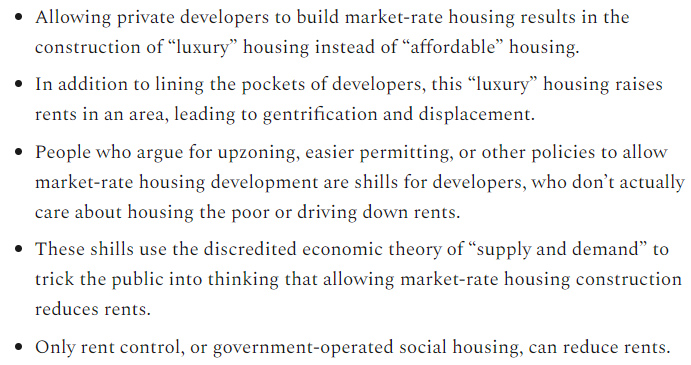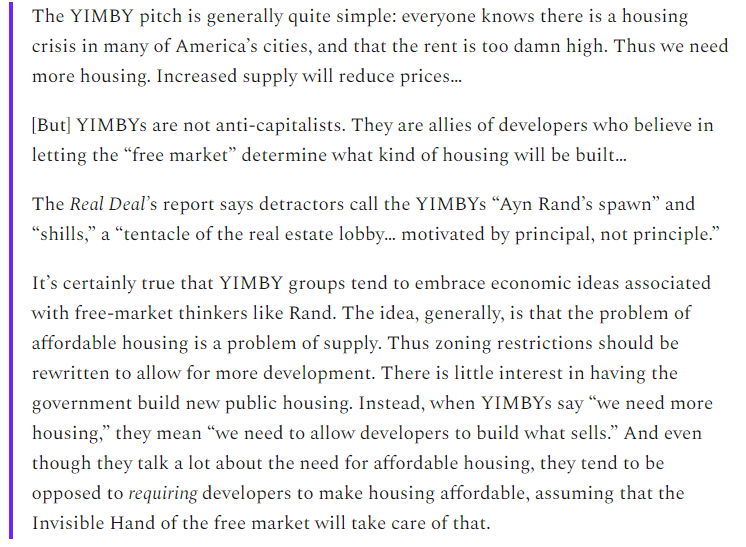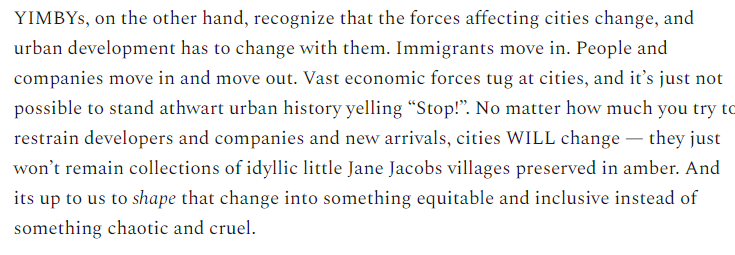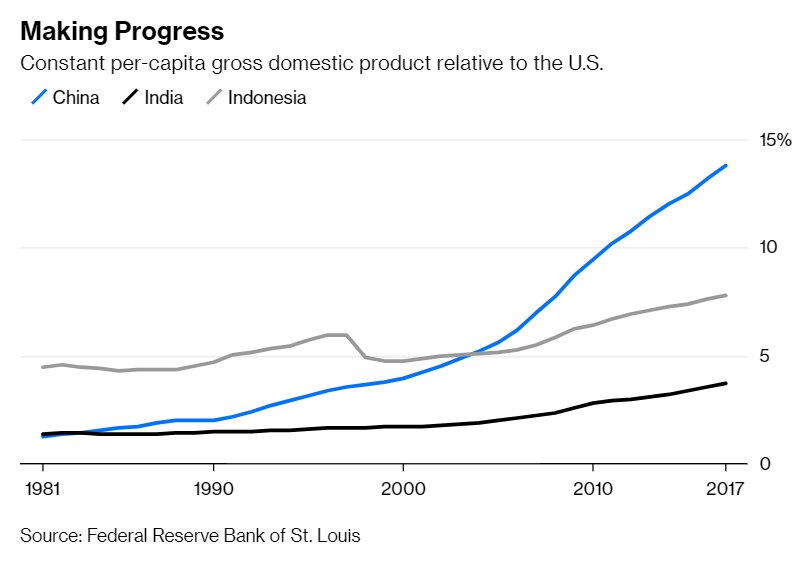2/Left-NIMBYs have developed a canon of interlocking, mutually reinforcing beliefs about housing and urbanism.
These beliefs are mostly false, but they form a powerful "canon" that quickly ossifies into a hardened worldview.
It looks something like this:
3/Fortunately, Nathan J. Robinson of Current Affairs has written an article that perfectly encapsulates the Left-NIMBY worldview (and quotes me in it!).
So this is a teachable moment.
https://t.co/nvFJryQZGi
4/Robinson selectively quotes a Bloomberg article of mine (
https://t.co/iamRrW6oei).
Look at the part he quoted, vs. what I actually wrote!
Pretty different, eh? 😉
5/In fact, as I wrote in the article that Robinson failed to read more than one line of, it's theoretically possible that Left-NIMBYs COULD be right that allowing market-rate housing drives up local rents.
I take that possibility very seriously, as do YIMBYs.
6/But as always in economics, we need to look at the EVIDENCE, not just theory!
And although there isn't a mountain of evidence on market-rate housing yet, some evidence is starting to pile up.
And it doesn't look great for the Left-NIMBY theory.
7/For example, here's a 2016 paper by Xiaodi Li about what happens to nearby rents when you build market-rate housing.
https://t.co/AwrJTJK2lY
8/And here's a brand-new paper by Kate Pennington about what happens to rents and to gentrification when you build market-rate housing in San Francisco:
https://t.co/8GCbE1jNOC
9/And here's a 2019 paper by Brian Asquith, Evan Mast, and David Reed, about what happens to rents and to gentrification when you build market-rate housing:
https://t.co/6YPHc38NDF
10/There are others (
https://t.co/Hp3ecU9Ly0,
https://t.co/AjipSyRSOy), but the general result here is starting to become clear.
Market-rate housing lowers nearby rents while drawing high-income people away from low-income neighborhoods.
11/In fact, reality looks very much like my "Yuppie Fishtank Theory" (which is really just a segmented markets model).
It's an explanation of why YIMBYism doesn't need Econ 101 or Supply-and-Demand:
https://t.co/8o6V0L4Wbv
12/But Robinson gets things even more wrong when he claims that YIMBYs are Randian shills who hate public housing and demand that market-rate housing be the only solution.
Here's what he writes:
13/Robinson singles out three YIMBY organizations for his accusations:
California YIMBY
YIMBY Action
Open New York
Let's see what each one has to say about public housing, shall we?
Here's Brian Hanlon, co-founder of California YIMBY.
https://t.co/hU4hWQh1Px
14/Here's Laura Foote, executive director of YIMBY Action:
https://t.co/M52O8R67St
15/Here's Ben Carlos Thypin, founder of Open New York:
https://t.co/OxII8YxxKh
16/Robinson simply failed (or refused) to do his homework. His characterization of these YIMBYs is utterly wrong. In reality, they're just a bunch of lefties who want to build ALL types of housing instead of insisting on just one.
17/In fact, I think the conflict between YIMBYs and Left-NIMBYs is not fundamentally about evidence, or about public housing.
It's about preservationism vs. growth and change. Left-NIMBYs want to stand athwart urban history, yelling Stop.
18/Whereas YIMBYs recognizes that cities will always grow and change, and we can't preserve them in amber. Instead, we have to shape their growth into something equitable and inclusive.
19/Left-NIMBYism is not confined to the West Coast; you see it popping up in cities across the nation. It's wrongheaded, but it's something we're going to have to deal with as we fight to make American cities livable for everyone.
(end)
https://t.co/05c6IMSc4y
Anyway, if you like this sort of thing, you can sign up for my free email list, and have my posts delivered directly to your inbox!
https://t.co/FGppA1M8W6












